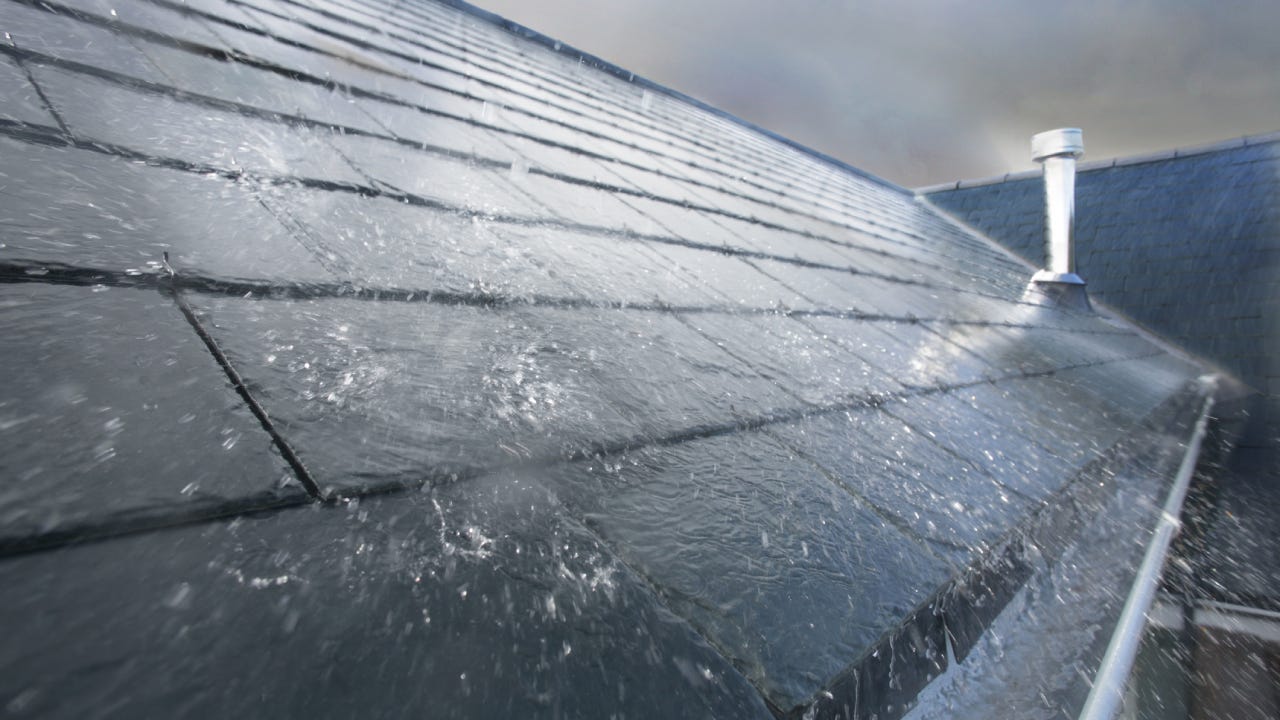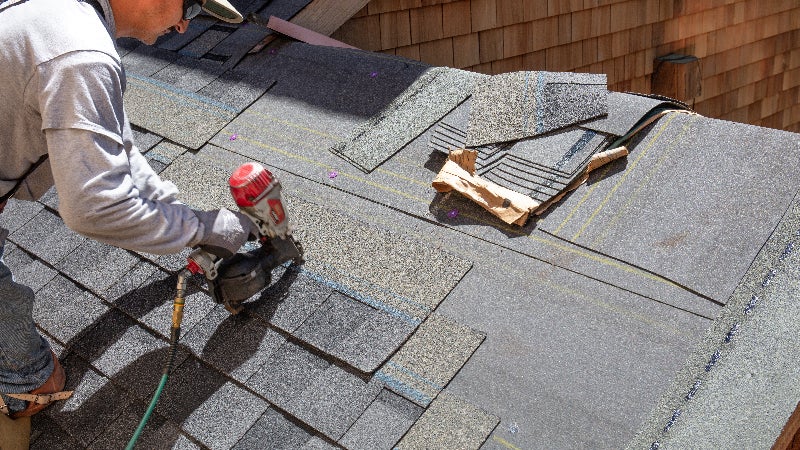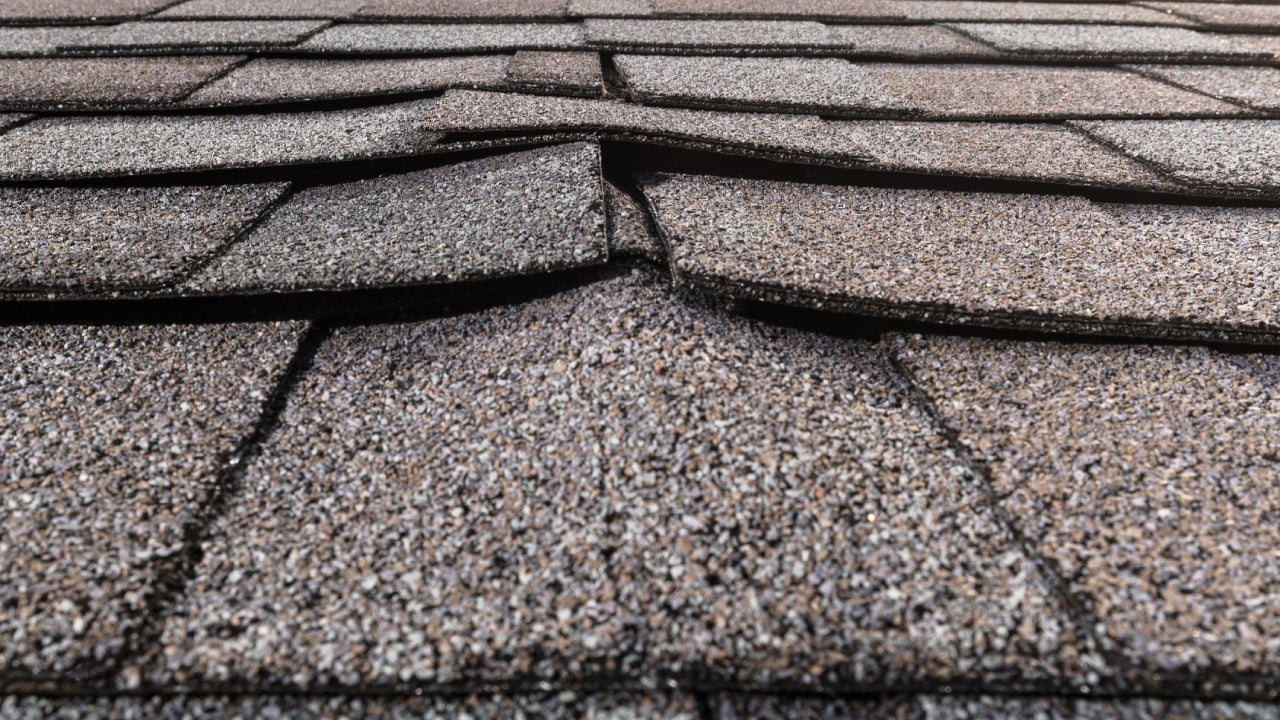Roof insurance: ACV vs. replacement cost




When a storm blows through, your roof may take the brunt of the damage. Your home insurance includes financial protection for your roof, but the exact payout will depend on your policy. Your roof can be insured at actual cash value (ACV) or replacement cost value (RCV). ACV factors depreciation into your claim, while RCV does not. Because RCV claim payouts are usually higher, this type of coverage usually costs more and may not be available for older roofs. Bankrate’s insurance editorial team explains what you should know about roof actual cash value versus replacement cost value and filing a roof claim.
What is roof insurance?
Roof insurance, as the name indicates, is the part of your homeowners insurance policy that will pay out if your roof is damaged or destroyed in a covered incident. This coverage is included in the part of your policy called dwelling coverage, or Coverage A, which handles damage to the structure of your home. Note that dwelling coverage will not pay for damages caused by maintenance issues, only for sudden disasters like a fire or windstorm.
When you ask an insurer for a quote, they may want to know the age of your roof. In general, the older your roof, the more it will cost to insure it. That’s because an older roof is more likely to be damaged or destroyed in a covered peril than a newer or fortified roof, thus it’s riskier for an insurer to cover it. They may also require an older roof to be covered at actual cash value instead of replacement cost value, ensuring that the payout is smaller in the event of a claim.
What is roof ACV?
Actual cash value, or ACV roof coverage, means that your insurance company agrees to pay you the roof’s depreciated value (prior to the damage) in the event of claimable damage. Depreciation is calculated by a claims adjuster, who will inspect the roof to determine its replacement cost, review its current condition and estimate its remaining lifespan.
Say you paid $60,000 for a new roof 10 years ago, but its value has depreciated by $25,000. Now, your roof is only valued at $35,000. If you have ACV coverage for your roof, and it is completely destroyed in a covered claim, here’s what that payout could look like for a full roof replacement:
$60,000 (cost of roof when you first got it) – $25,000 (depreciation) – $1,500 (deductible) = $33,500
There is a connection between the age of your roof and your insurance coverage. Actual cash value roof coverage is typically used for older roofs or roofs in poor condition. However, some insurers only offer ACV coverage for roofs, regardless of age. The good news is ACV is typically a less expensive way to cover your roof.
Depending on state regulations, some insurance policies may give you the option to choose between ACV or RCV. But if your roof is past a certain age (generally 15 to 20 years old), your insurer may automatically stipulate that you have actual cash value coverage. Other states do not allow insurers to use ACV to assess roof replacement coverage. For that reason, checking local regulations when deciding on your roof insurance coverage can be a good idea.
What is the difference between ACV and replacement cost for roofs?
Replacement cost value coverage is a bit simpler to understand than actual cash value for roofs. If you have a homeowners policy that covers your roof on a replacement cost basis, the insurance company is agreeing to pay you what it would cost to replace your roof with a comparable new roof without factoring in the roof’s age or prior condition. Your claims adjuster will base their assessment and your settlement on new roofing materials that are comparable to what you currently have, as well as labor costs.
Let’s use the same example above, but this time, with replacement cost value instead of actual cash value. Your insurance claim wouldn’t factor depreciation into your payout, but you would still be responsible for your deductible:
$60,000 (cost of roof when you first got it) – $1,500 (deductible) = $58,500
RCV generally costs more than ACV coverage, but it typically means that your homeowners insurance deductible would be your only out-of-pocket expense if your roof experiences covered damage. If your roof is newer or in good condition, you may be able to insure it with replacement cost coverage. Some companies will automatically assign RCV to your roof based on its age, or you may be able to choose between ACV and RCV.
ACV vs. RCV for your roof
There are several factors to consider when deciding how to insure your roof. First, what options is your insurance company giving you? Based on the age of your home and your roof’s condition, your insurer may automatically assign a certain coverage type to your roof, taking the decision out of your hands. For example, an insurance company is not likely to cover a 40-year-old roof on a replacement cost basis, since the roof is probably in poor condition and may be more susceptible to damage. In hurricane-prone, tornado-prone and hail-prone states, property insurers may have stricter underwriting standards for roofs.
Pros and cons of ACV
If you’re given the choice between ACV vs. RCV for your roof, you will need to consider several aspects of your financial situation to choose optimal coverage. Some of the key pros and cons of ACV coverage include:

ACV pros
- Usually yields a lower premium
- May be a more affordable option overall if your roof is fairly new

ACV cons
- Usually yields higher out-of-pocket costs after a covered loss
- Depreciation calculation may vary by insurance carrier
Pros and cons of RCV
RCV offers more robust coverage, but it might not be the right choice for every homeowner. Below are some key perks and drawbacks of RCV roof coverage:

RCV pros
- Likely to reduce your out-of-pocket costs after a covered loss, especially if your roof is older
- Accounts for real cost factors like inflation and supply chain surcharges

RCV cons
- Typically more expensive than ACV
- May not be available if you have an older roof
How roof upgrades impact insurance
Depending on your roof, you may be able to upgrade it to improve its durability and resilience. Various roofing materials can be used, with some offering greater protection than others. What’s best for your situation will depend on where your home is located and what type of perils it will likely face.
For instance, a home in an area that often experiences hail storms may benefit from impact-resistant shingles, which are designed to handle impacts from objects like hail. Similarly, one could choose metal roofing options to gain a high level of durability, although the upfront cost can be significant.
Details vary between insurers, but fortifying your roof can often result in lower premiums if you choose high-durability materials, wind resistance features or fire safety components.
What are FORTIFIED roof standards?
The Institute for Business & Home Safety (IBHS) created a standard for roof construction based on extensive research to increase resilience and durability in the face of severe weather and the potentially damaging perils it represents. The FORTIFIED roof standard is not mandated; it is a voluntary construction program that contractors may use when constructing a roof. It’s worth asking a contractor if they use this standard before hiring them for the job.
The IBHS FORTIFIED roofing standard focuses on enhanced attachments and sealing of the roof deck, as well as utilizing metal edging, high-impact materials and proper attic ventilation. Using these standards for your roof can result in better durability, long-term savings and potential insurance premium discounts. Some states, such as Alabama, require insurers to provide discounts if roofs meet the IBHS FORTIFIED standard.
While this standard can be utilized when constructing a new roof, it may also be possible to upgrade your current roof. To find out, speak with a certified contractor and ask them if your roof can be upgraded to the FORTIFIED roof standard.
The insurance claim process
After you file a claim for roof damage, your insurance company will likely send out an adjuster to assess the damage. Your insurer will then determine whether the damage is covered by your insurance policy — and if so, how much — and allow you to either work with a preferred contractor or find one that you would like to hire.
Note that insurance policies do not provide protection for general maintenance of roofs, such as wear and tear. If your roof is in poor condition or past a certain age, your insurance policy may not cover damage at all.
Insurance roofing scams to avoid
If you are given the opportunity to choose your own roofing contractor, be mindful of scams. Excessive roofing scams have sprung up in coastal states. Florida’s have made headlines and heavily contributed to the state’s ongoing insurance crisis.
Before hiring a roofing contractor, make sure they are licensed and be wary if they’re asking for a large sum of money up front. Upfront costs in excess of 10 percent or $1,000 are two red flags to look out for.
Frequently asked questions
You may also like

Home insurance isn’t just more expensive, it’s also harder to get in 2025

Does homeowners insurance cover renovations?

How much does it cost to replace a roof?

Does home insurance cover roof replacement
